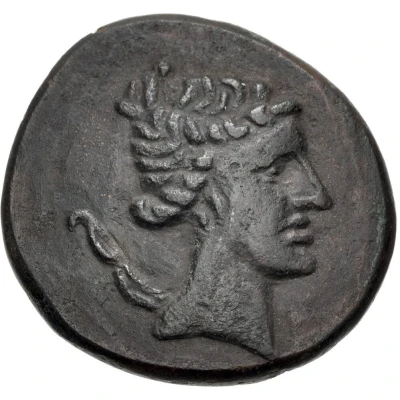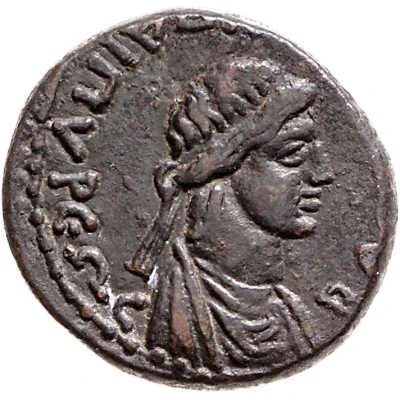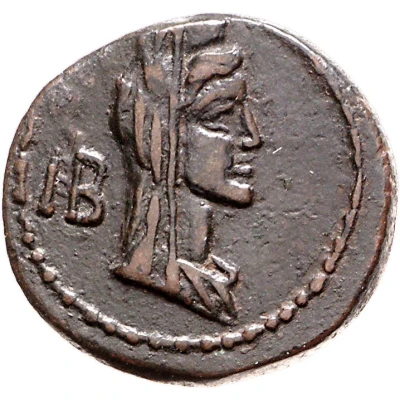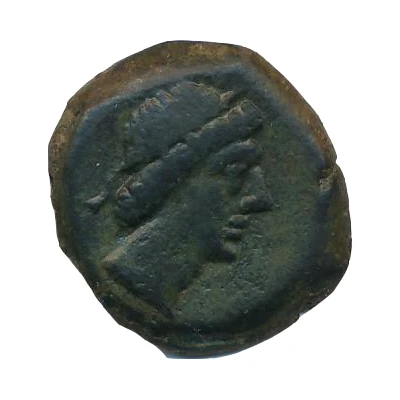
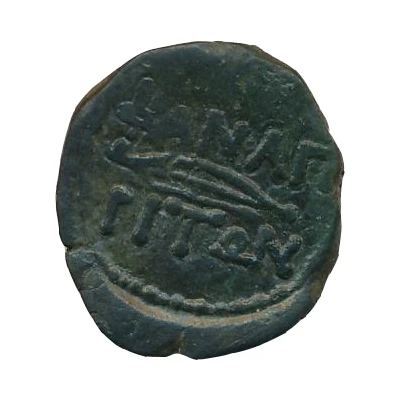

Tetrachalkon - Asander Phanagoria 47 BC - 21 BC
| Copper | 5.5 g | 18 mm |
| Issuer | Bosporan Kingdom (Bosporos) |
|---|---|
| King | Asander (46 BC - 17 BC) |
| Type | Standard circulation coin |
| Years | 47 BC - 21 BC |
| Value | Tetrachalkon (1⁄12) |
| Currency | Drachm |
| Composition | Copper |
| Weight | 5.5 g |
| Diameter | 18 mm |
| Shape | Round (irregular) |
| Technique | Hammered |
| Demonetized | Yes |
| Updated | 2024-10-09 |
| Numista | N#166807 |
|---|---|
| Rarity index | 95% |
Reverse
Bow and arrow below, lettering in two lines above and below
Script: Greek
Lettering:
ΦΑΝΑΓΟ
ΡΙΤΩΝ
Comment
This coins is one of the few types which were produced in the city of Phanagoria (Fanagoria) during the reign of the king Asander. The face of Apollo is sometimes erronerously considered to represent the bust of the king (e.g. Stanislavsky, 2000).Weight varies: 3.2-7.8 grams, diameter varies: 16.0-20.0 mm
References:
Staniskavsky I.M. 2000. Coins of Bosporan kingdom and their value. Moscow, 305 pp. (in Russian).
Anokhin (1986) 249.
Interesting fact
One interesting fact about the Tetrachalkon - Asander (Phanagoria) coin from Bosporan Kingdom is that it features a unique blend of Greek and Persian design elements. The obverse side of the coin depicts the profile of Asander, the ruler of the Bosporan Kingdom, with a Greek-style laurel wreath, while the reverse side features a Persian-style altar with a fire burning on top, surrounded by two attendants. This fusion of design elements reflects the cultural exchange and influences that existed between the Greek and Persian empires during that time period.
